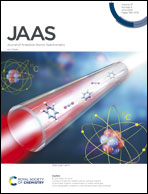Application of laser-induced breakdown spectroscopy with a generalized regression neural network and LASSO-type methods for estimation of arsenic and chromium in soil
Abstract
The identification of heavy metals in soil, specifically arsenic (As) and chromium (Cr), is critical for evaluating the preservation and quality of the soil. Laser-induced breakdown spectroscopy has become a promising technique for quantitative analysis of elements with various benefits, particularly the capability combined with multivariate analysis models. Nevertheless, LIBS spectra frequently contain a considerable quantity of high-dimensional data, which affects the predictive performance of the employed multivariate analysis models. Hybrid models combining feature selection methods, such as least absolute shrinkage and selection operator (LASSO), adaptive LASSO (AdaLASSO), sparse group LASSO (SGL), and generalized regression neural network (GRNN) were proposed to reduce uncorrelated and redundant features. The spectra of twelve soil samples were collected by using a LIBS setup and then assigned to the proposed method. The results showed that the coefficients of determination (R2) were greater than 0.94 for GRNN combined with these three feature selection methods. Then, the results were compared to those of the random forest (RF) and backpropagation neural network (BPNN) and it was found that SGL-GRNN outperformed the other combination models. The root mean square error of cross-validation (RMSECV), root mean square error prediction (RMSEP), relative standard deviation (RSD), and limit of detection (LoD) in SGL-GRNN were 4.52 mg kg−1, 4.01 mg kg−1, 9.43%, and 6.93 mg kg−1, respectively, for the prediction concentration of As, and 1.43 mg kg−1, 1.26 mg kg−1, 2.76%, and 2.09 mg kg−1, respectively, for the prediction concentration of Cr. The present findings reveal that when LIBS is paired with SGL-GRNN, it can accurately determine As and Cr in polluted soil, which might be turned into a viable approach for other application fields.



 Please wait while we load your content...
Please wait while we load your content...